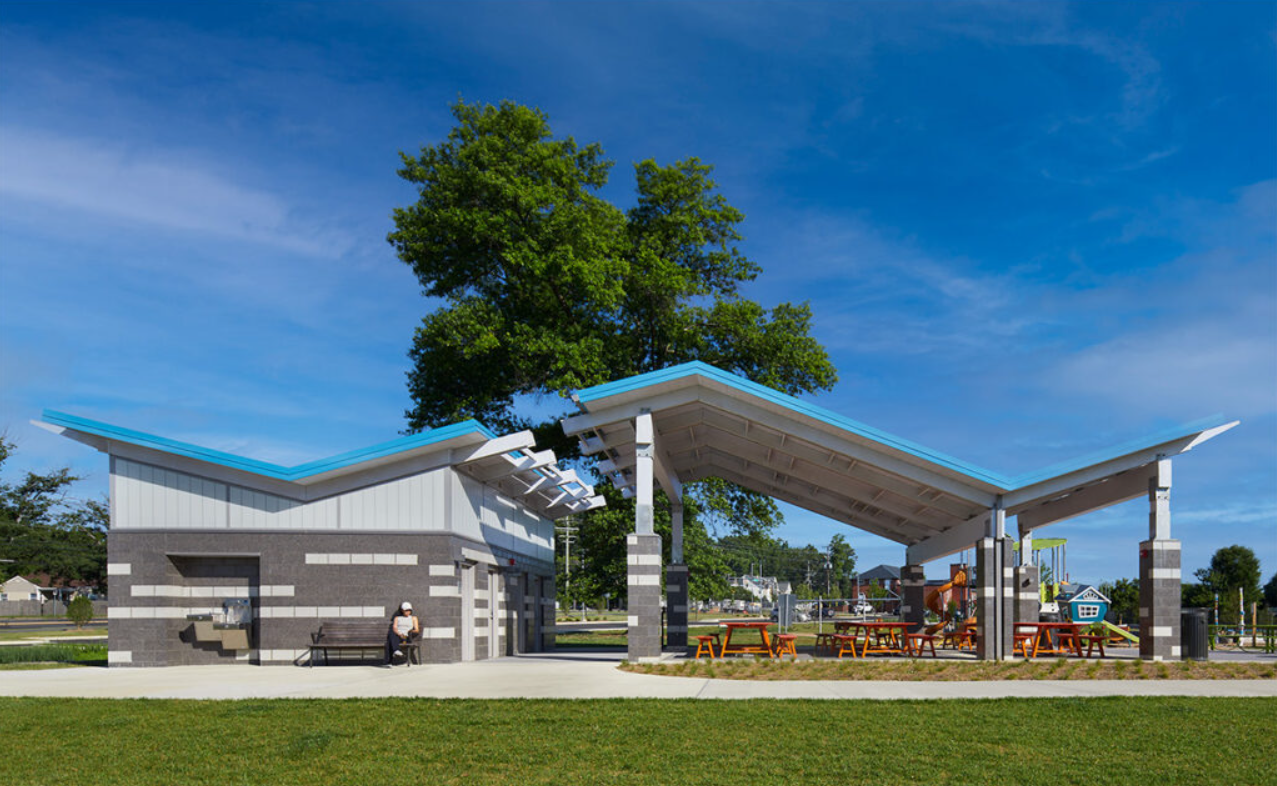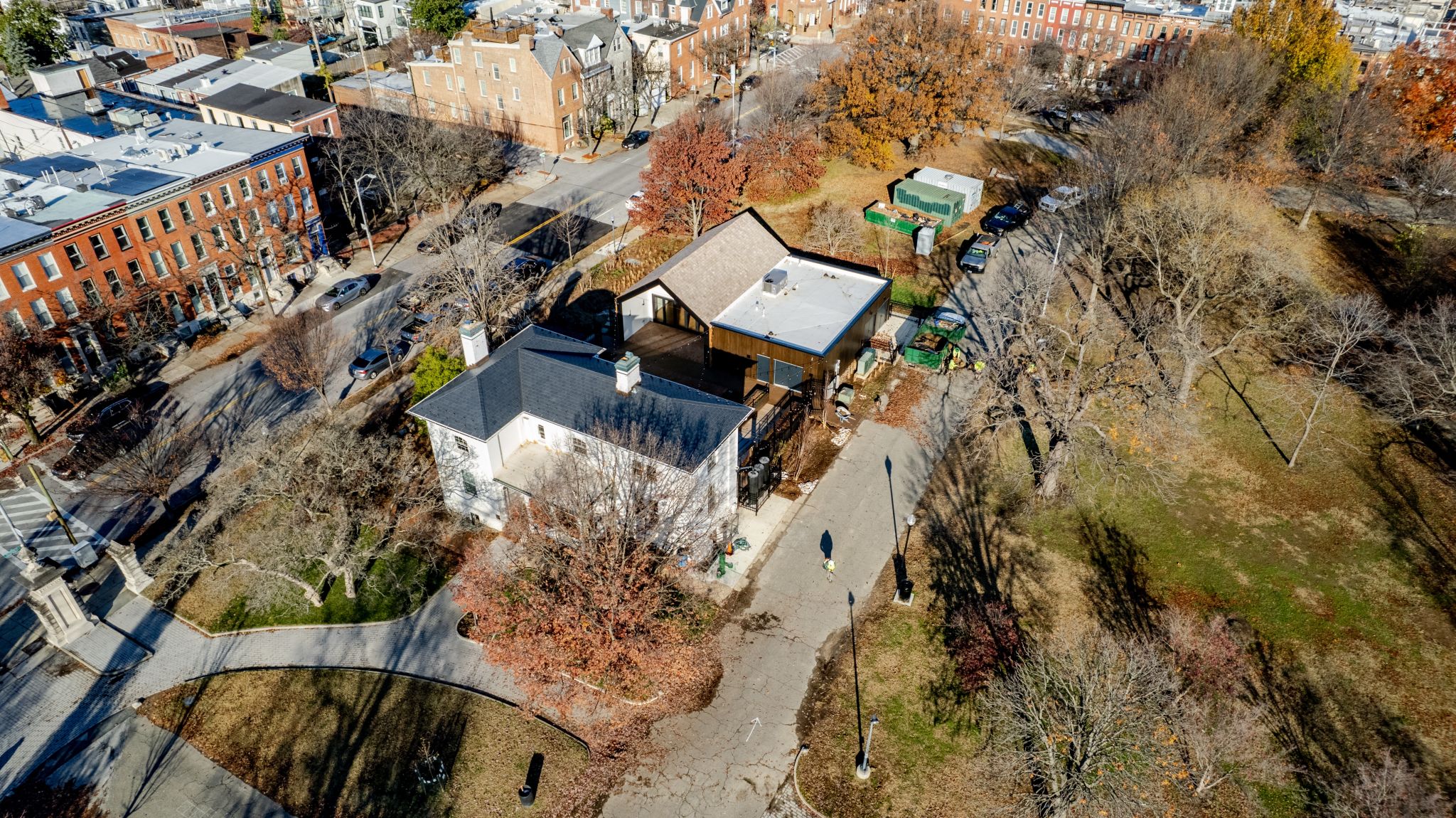DATE
News
Project Profile: Triangle Park Baltimore Peninsula

Source: BC&E News
Scope of work: Construction of 14 custom shade structures
BC&E Member companies involved: Baltimore Fabrication, The Whiting-Turner Contracting Company
Architect: PI.KL Studio

Stretching 20 feet tall and topped with a lacy canopy of cut-steel plates, the ‘trees’ at Triangle Park on Baltimore Peninsula are the product of human creativity and robotic precision.
When Baltimore Fabrication was contracted to create the one-of-a-kind shade structures, the company collaborated with the project’s design firm, Gemini Fabrication and Design, to determine the best ways to fabricate and install the pieces efficiently and deliver a high quality and highly durable product.
“This is not your typical miscellaneous metals item. They are very ornamental, very large and very unusual in design,” said Will Connelly, Project Manager.
Advanced technology proved key to the project’s success.
The project team created a 3D model of the tree design then fed CNC files into Baltimore Fabrication’s Python machine.
“The Python is a relatively new addition to our fabrication shop,” Connelly said. “It is basically a robot that is 10 to 12 feet tall and about 10 by 10 feet wide. It can handle extremely large beams. It will pick them up, flip them around, drill all the holes, cope everything. With the Python, work that would take 50 to 60 manhours per ton on a traditional beam line, can be completed in five manhours per ton and with much greater accuracy.”
The Python eliminated human error from very demanding fabrication, said Dustin Morgan, then General Manager at Baltimore Fabrication. It also simplified and improved the quality of the work. The Python cleanly cut both tube steel for the trees’ branches and I-beams for the trees’ trunks into long triangles.

“The only other way to do that would have been to hand cut the steel with a torch, then grind it down until it looks perfect. That’s a challenging process and creates room for errors,” Morgan said. For the I-beams, the Python “stitch cut” each beam, perforating the steel.
“Then when the beam cooled down, we were able to go back and cut the two pieces loose,” Morgan said. “We would have struggled to do that by hand. Stitch cutting with the Python controlled the heat warpage. Otherwise, those pieces could have curved.”
For the shade structures, Baltimore Fabrication helped revise the way some components were fabricated and installed. Instead of fabricating each tree branch separately and welding them together onsite, Baltimore Fabrication created a pair of four-branch assemblies for each tree — a process that both reduced field work and lowered the risk of damaging the structure’s high-performance coating. Baltimore Fabrication also proposed laser cutting the lacy canopy from steel plates rather than using more expensive products originally considered by the architect.
Following two months of fabrication, the project team transported the major components of the trees to Baltimore Peninsula, then assembled each tree, which weighed about 8,000 pounds apiece, upside down in a parking lot, moved them into place and bolted them down.
“For such an intricate, unusual project, the whole thing went extremely smoothly,” Connelly said.













